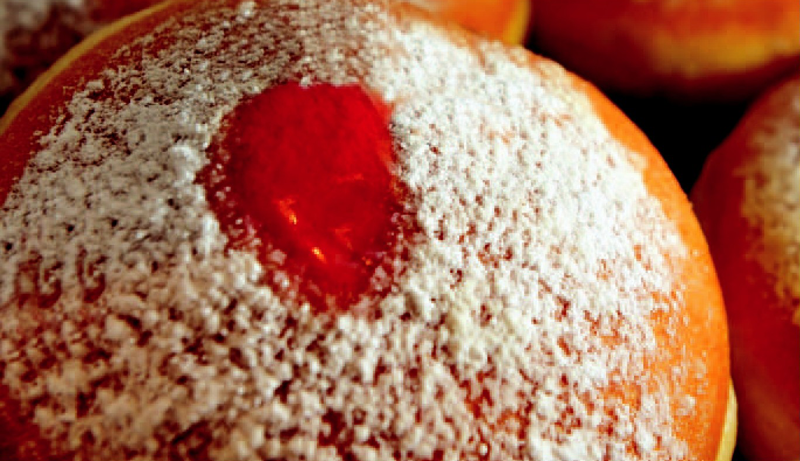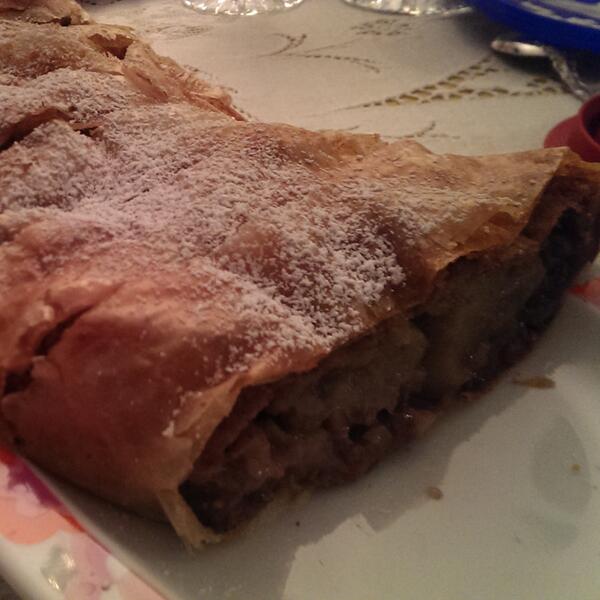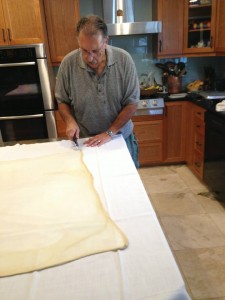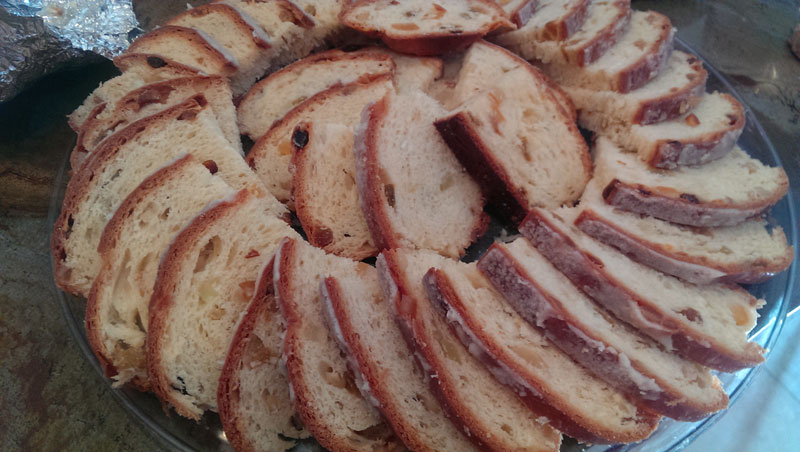 Europe has a long tradition of sweet breads fortified with whatever sweeteners and enrichments were on hand — usually honey or sugar, butter, eggs, nuts and/or dried fruit. These sweet breads represented both a change from the stultifying routine of a diet that, for most people, consisted of more than 80% bread and gruel, and a special treat honoring the observance of religious occasions.
Europe has a long tradition of sweet breads fortified with whatever sweeteners and enrichments were on hand — usually honey or sugar, butter, eggs, nuts and/or dried fruit. These sweet breads represented both a change from the stultifying routine of a diet that, for most people, consisted of more than 80% bread and gruel, and a special treat honoring the observance of religious occasions.
In Germany, stollen is a longstanding Christmas tradition. And while each region has its own variations, Dresden stollen has emerged as the de facto standard. So herewith, a recipe that produces a traditional German stollen that’s impossible to stop nibbling.
Yield: Two 2½ lb. (1.15 kg.) loaves
Sponge:
Volume |
Ingredient | Ounces | Grams |
Baker’s |
| 1 cup | Milk | 9.00 | 250 | 25% |
| 2 Tbs | Instant yeast | 0.80 | 24 | 2% |
| 1 Tbs | Granulated sugar | 0.35 | 10 | 1% |
| 2 cups | AP flour, unsifted | 9.00 | 250 | 25% |
Dough:
| 6 cups | AP flour, unsifted | 26.50 | 750 | 75% |
| ⅔ cup | Milk | 5.30 | 150 | 15% |
| ½ cup | Granulated sugar | 4.10 | 115 | 12% |
| 2⅔ sticks | Unsalted butter, room temp | 10.60 | 300 | 30% |
| 2 | Large eggs, beaten | 4.05 | 115 | 12% |
| ½ tsp | Table salt | 0.10 | 3 | 0% |
| 1 Tbs | Rum | 0.50 | 15 | 2% |
| 1¼ cups | Golden raisins | 7.00 | 200 | 20% |
| ½ cup | Candied citron, diced | 3.50 | 100 | 10% |
| ½ cup | Candied orange peel, diced | 3.50 | 100 | 10% |
| 1 cup | Chopped blanched almonds | 5.30 | 150 | 15% |
| 1½ stick | Melted butter, for topping | 5.30 | 150 | 15% |
| 2½ cups | Powdered sugar for topping | 10.50 | 300 | 30% |
- Heat the milk until warm to the touch, dissolve the yeast and sugar and add to the flour, hand mixing until smooth. Cover and let stand about 20 minutes, until very bubbly.
- In the bowl of a stand mixer, combine the sponge and all the dough ingredients, mix 6-8 minutes at low (KA 2) speed, using the dough hook. Turn the dough onto a well-floured work surface and knead in the fruit and nuts until evenly distributed throughout the dough.
- Form the dough into a ball and transfer it to an oiled bowl. Cover with plastic wrap and let rise until doubled in bulk, about 1 hour.
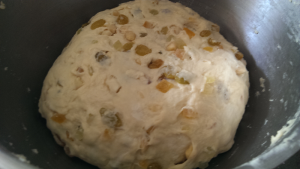
- Preheat your oven to 400°F. Turn the dough onto a lightly floured work surface, punch it down and divide it in two equal sized pieces. Form each piece into a long flat loaf and place on a parchment lined sheet pan. Let the stollen rest for 20-30 minutes.
- Put the stollen in the oven and bake for 12 minutes at 400°F, then lower the temperature to 350°F and continue baking for another 30-40 minutes, taking care not to let them get too brown.
- Remove the stollen from the oven and immediately brush them generously with melted butter, then use a sieve to give them a thick coating of powdered sugar. Repeat twice more and let the stollen cool in the pan.
- When cool, wrap them in aluminum foil or place them in an airtight container and let them rest, unrefrigerated, for 1-2 weeks before serving.
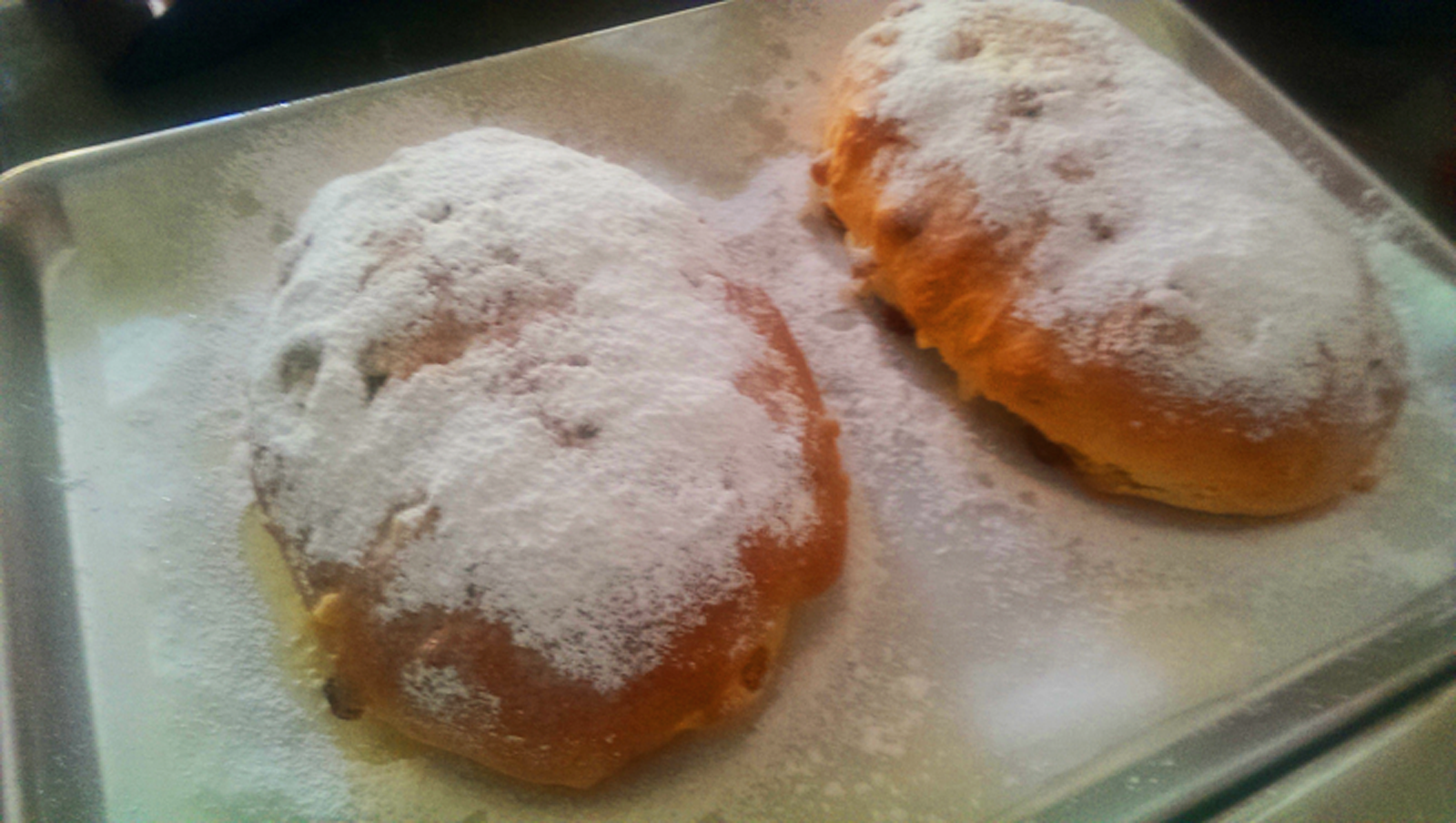 NOTE: Feel free to substitute various fruits and nuts for those called for in the recipe. Prominent German baker-blogger Wolfgang Suepke, for example, recently posted a recipe for Cranberry-Walnut stollen, and is a huge booster of Thuringia-style stollen (he’s from Erfurt, in the heart of Thuringia). So enjoy and Season’s Greetings!
NOTE: Feel free to substitute various fruits and nuts for those called for in the recipe. Prominent German baker-blogger Wolfgang Suepke, for example, recently posted a recipe for Cranberry-Walnut stollen, and is a huge booster of Thuringia-style stollen (he’s from Erfurt, in the heart of Thuringia). So enjoy and Season’s Greetings!

